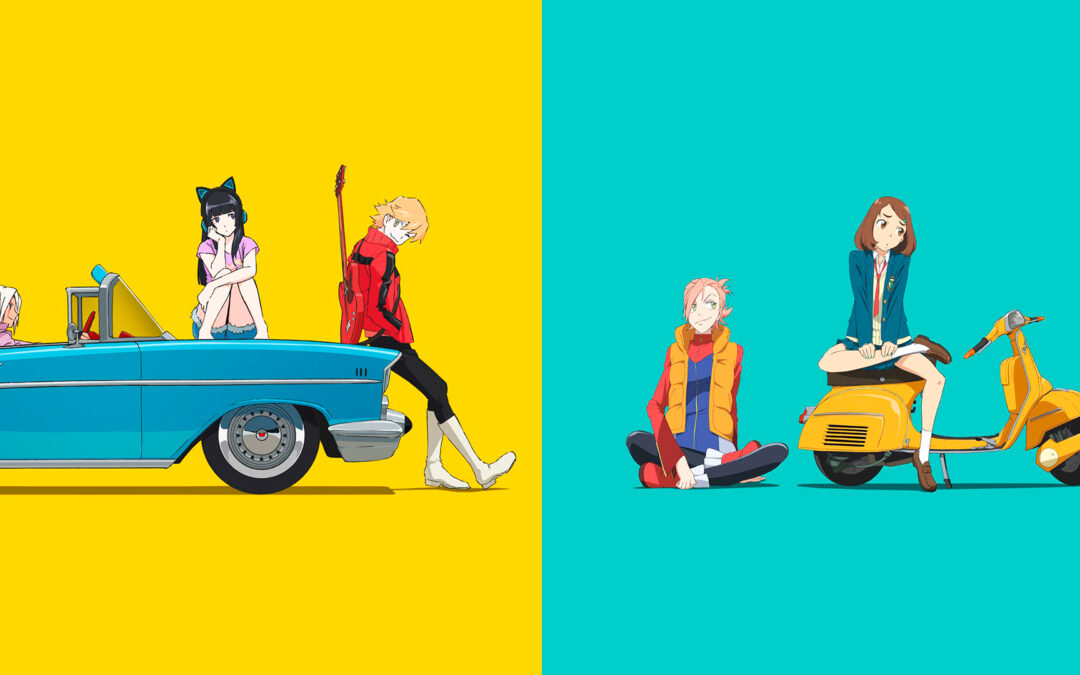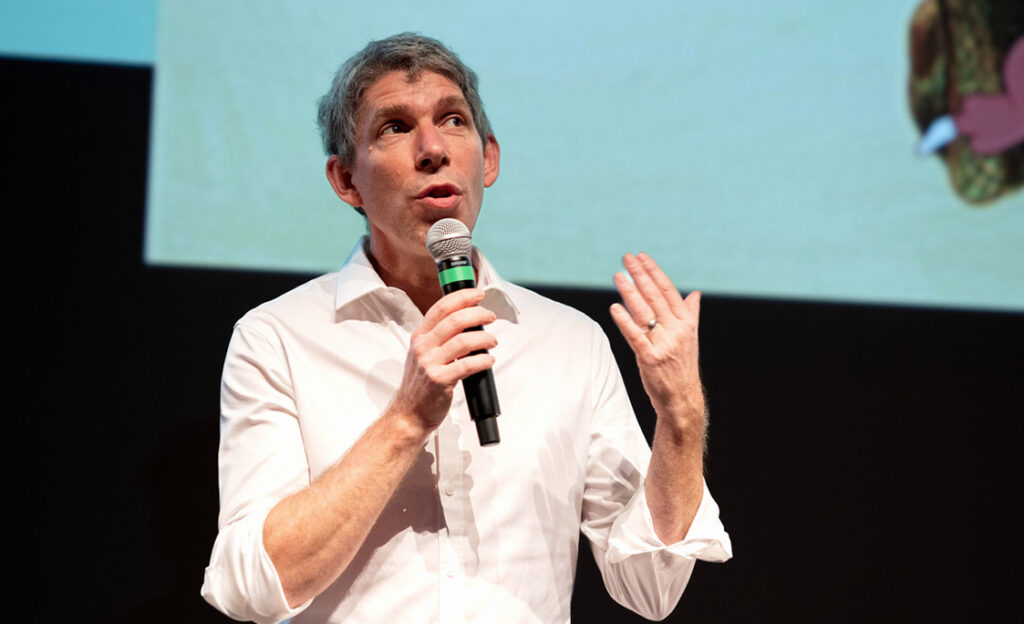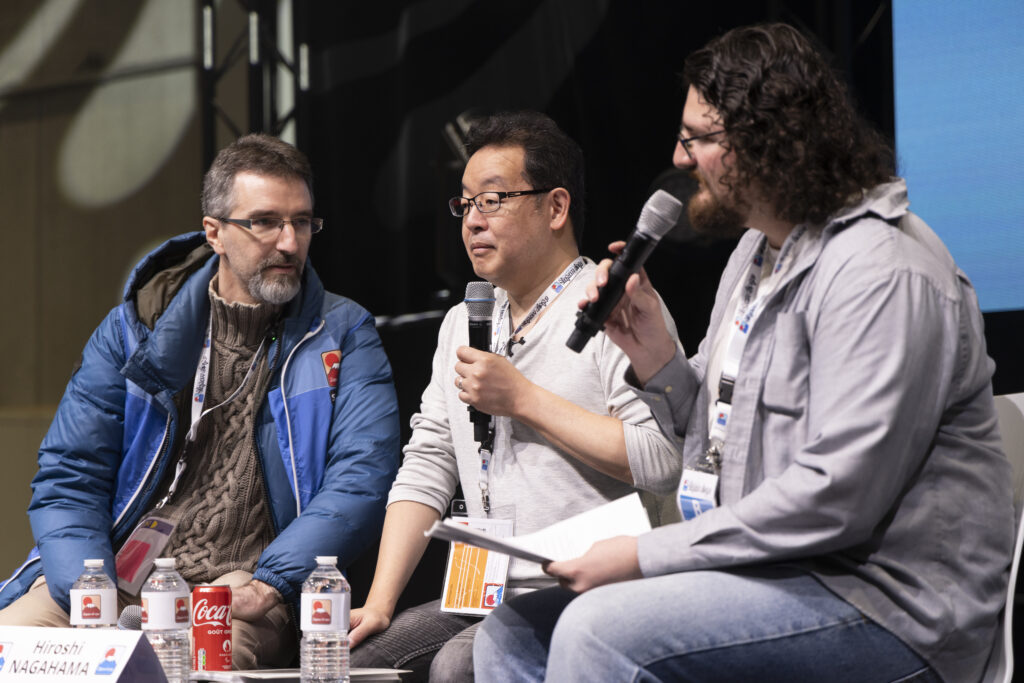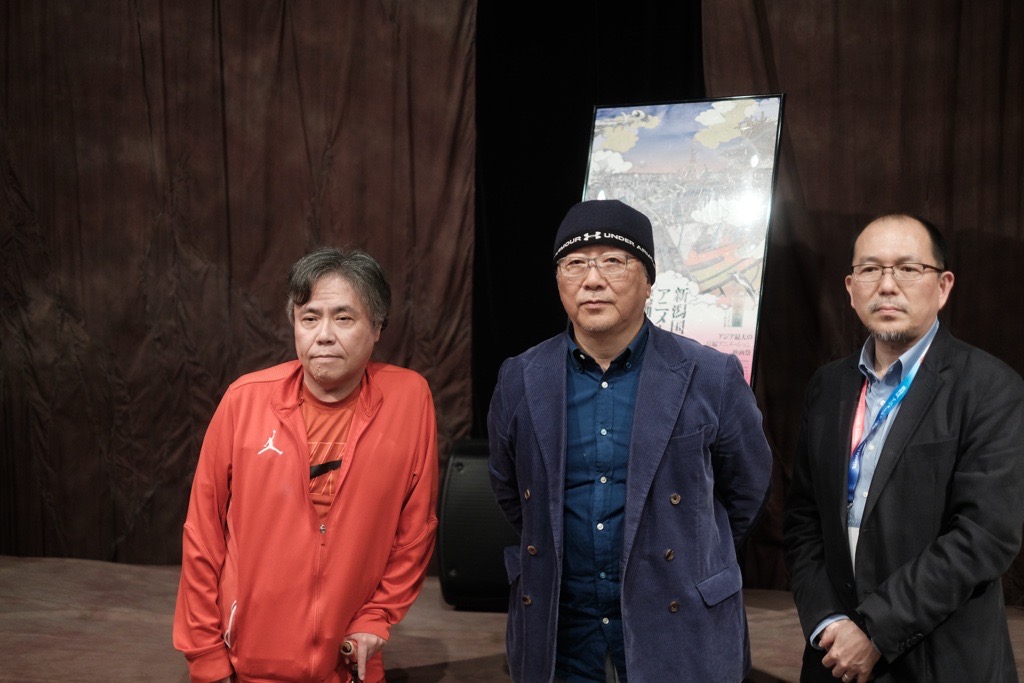Recently I released a video discussing FLCL, and tried to apply a more Japanese reading to it that went beyond the typical Western Coming-of-age take. I was originally going to include some points on the sequels in that video, but found it was getting to be exceedingly long for my tastes, and didn’t want to stray too far from my main focus points.
But I still think there are some interesting things to talk about with Progressive and Alternative. They both sort of just came in the popular consciousness, despite the continued reverence for the original, the sequels these days tend to be barely mentioned, and if they are it’s often in a very harsh manner. One such complaint I’ve come across is that they simply just aren’t “FLCL”.
Defining exactly what makes FLCL itself is rather untenable, but regardless of what you think of the quality of them, in expanding on my original claims, I think they are in fact, very FLCL, and I’d even go as far to say they expand on those thematics even more than the original. Let’s take a look at why.
Furi AND Kuri??? 2 Sequels, 2 Decades Later
Just to get it out of the way, I like both of them generally. Are they as good as the original? No, not at all, but I don’t think it’s entirely useful or just realistic to expect that.
My biggest real complaint with either of them is they don’t really take some of the extreme shifts in art style or animation approach that made the original so memorable and bursting with energy. There are a few here and there, but the manga section in Progressive for example feels like lip service and pales in comparison to the originals. They are slower overall in pace and tone compared to the original, but I don’t think that’s too much of a bad thing, and the chaos of the original is overstated anyway which had more than its fair share of introspective scenes.
First of all, their premises are interesting for taking the direct opposite approach to each other. Progressive is both a direct sequel and has light strokes of being a remake: with a very similar premise, structure, and even certain beats and musical choices being direct parallels to the first. Whereas Alternative can sometimes feel so far removed that without the inclusion of Haruko you could be forgiven for thinking it was in a different franchise. I sometimes see these levied as complaints towards the two, but I think they’re strengths in offering both ends of the spectrum.
Second, doing them as sequels nearly two decades later results in some interesting production growing pains. Part of the original branding for FLCL was “GAINAX’s digital animation”, a lot of the early promotional material and the first DVD releases had this all over. At the turn of the millennium, with the en masse industry switch to digital ink and paint seeming inevitable, and FLCL’s overall attempt to not look like anything else they had done before, made for a sizable unsung part of it’s aesthetic – a modern, sleek, digital anime.

FLCL marketed as “digital animation” on the cover of the first volume’s DVD.
Marketing a show around such a thing now would be as laughable as saying ‘in color’, so the sequels instead seem to subtly sell themselves for their modernity: being HD, having clean contemporary updated designs, full of post-processing, and also importantly, the simulcast angle being highly emphasized. Considering the march of modern life is also a subtle motif, with abundance of smartphones and 2010s digital aesthetics, I think it is rather fitting that it goes for this “just like other current anime” vibe.
Also interesting to note how the original is almost always referred to as a GANAIX show, even by the creators, when it was a joint production with Production IG, who seemingly are ignored as part of the authorial ownership. Hiroki Sato described the original FLCL as the “last good-bye to Gainax’s break period”, due to only being possible from the immense success of NGE. With the dicey financial situation at GAINAX leading to IG gaining the rights for it, it also kind of reflects the difference in era, where shows are greenlit as remakes, reboots, and continuations of existing properties as they are a far safer bet. Ironically, history repeated itself in this regard, as Production IG took all the brunt of criticisms both positive and negative, despite both Progressive and Alternative having entire episodes outsourced to Studio NUT.
Seems as much as things change, as much they stay the same.
Endless Everyday Still Endless 17 years later
I put forward in my FLCL video that one of the biggest thematic readings of the original was The Endless Everyday. Coined by sociologist Miyadai Shinji, it describes the cycle of monotonous daily living in developed countries where you don’t really need anything, but can’t really get satisfied either. Naota’s most famous line of course is “Nothing exciting ever happens here”, and for as much as it is ironic, it’s also pretty true in the grander scheme of things, considering life just keeps going on in the sequels.
The sense of the Endless Everyday, and in particular the subconscious desire for SOMETHING to come and destroy the malaise of daily life is just as strong as ever in both. Alternative hinges on the literal destruction of the world brought on by modernity and abandoning it to start fresh on another exciting planet. This is literalized as giant Google Map pins stabbing the Earth and flattening the land, like a giant wave of digital gentrification.
And it couldn’t be more blatant in the protagonist of Progressive. Whereas Naota’s subconscious desire for something to come along and break him out of his monotony was fairly subtle, Hidomi has blissful wet dreams of the literal end of the world, brought upon by the zombified/authorized versions of her classmates, the elements and symbols of her daily life scattered across this hellscape. And at one point getting downright horny at the sight of extreme violence, like the girl is down bad for armageddon.
And much like the original, despite all the crazy things that happen over the course of the plot, not much really changes for the main characters. Hidomi and Iide may be in a relationship at the end of Progressive and there may now be a visible planet in the sky of Alternative, but life still goes on, the same as it had before, and as it will after.
But of course, it won’t, as that’s the big lie of the Endless Everyday, because time gets the best of us all.
Mono no Aware
Mono no Aware, awkwardly translating to “the Pathos of Things”, is a Japanese phrase that refers to “the link between impermanence and beauty”, and that the more delicate and permanent something is, the more beautiful or worthy of attention it is. The most commonly cited example is Cherry Blossom viewing; As Parkes notes, “The blossoms of the Japanese cherry trees are intrinsically no more beautiful than those of, say, the pear or the apple tree: they are more highly valued [only] because of their transience”
All three FLCLs have a high sense of mono no aware, usually in the sense of the wistfulness of the turbulence of youth, which, though frightening and full of risks, is where all the exciting stuff happens and anything is possible. It tends to manifest in the relationships, most strongly felt in Alternative. Alternative ends with Kana never making up with Pets, and the exact nature of Pets feelings or her outburst towards Kana ever being made clear, but Kana clearly loves and cherishes her time and friendship with her as the best of her life, even if she will never see her again or even get closure knowing if she truly cared about her.
Progressive seemingly has the most straightforward happy ending of the three – it’s the only one that doesn’t end with the main character losing contact with an important person (outside of the usual Haruko/Jinryu) – but its sense of Mono no Aware is created from its relationship with FLCL Classic. With over three decades passing in canon, almost no-one from the original remains in Mabase. Some of their descendants appear, such as Masurao being revealed to be Amuro’s son, but it’s in a subtle and de-emphasized way that grants no greater hints into the lives of those characters.
Even the most central characters to the original are tossed aside by life, literally in the case of Canti, who just remained in that junk shop, lying there forgotten for years. Naoto and Mamami’s brief cameos in the credits show them in familiar poses, but out of our focus, older and sadder. All they can do now as adults is merely watch what they used to do as kids from afar; the results of Haruko’s crazy encounter with Atmosk only visible to them as a surprise starshower. They possibly don’t even have any idea it had anything to do with Haruko, they know about as much as we do. They are not mentioned by name at all throughout the season, nor are their families, or any of the characters from the original. We remember them as an audience, but this town does not.
And Haruko, the only constant of these three characters and iconic bouncy selfish crazy sexy oddball, actually has the most visible scar of this pathos, in either application of Alternative into the timeline. If Alternative is taken as a prequel to the original OVA, then Haruko’s tale is a cautionary one, of the corruption of a well-meaning authority figure in face of seductive power and isolation, one who becomes just a pawn to be used by those who poisoned her. If taken as a sequel, her arc is one of someone who eventually gives up on the pursuit of their goals in favor of dicking around and helping others. While she seems content and it’s ultimately the happier of the two options for her, there is still an element of tragedy about it, as she ultimately fails in her dream, a wanderer without a purpose or home. She doesn’t even get to stay within the environment she may have genuinely found an honest connection in, thrust into the next adventure without warning, or consent.
It’s as my grandfather used to say: “Life’s shit, then you die.”
Conclusion
Whether or not you actually like FLCL Progressive or Alternative, I think it’s disingenuous to say that neither of them are FLCL. They may or may not have been executed well, and that’s up to everyone to decide for themselves, but it’s easy to see the various ways they are all thematically linked. 17 years is a long time, and the exact cultural zeitgeist that went into an individual work can never fully be captured again, as a lot of it is either subconscious, lost to memory, or something entirely intangible. There are certain things that I think everyone can agree on, such as how crucial having a soundtrack by The Pillows is to being “FLCL”. But as the phrase itself is completely made up and meaningless, what exactly is “FLCL” is completely up to you to decide.
References
Ehoba [@htGOIW]. (2021, Dec 12). It’s interesting that Hiroki Sato calls FLCL “last good-bye to Gainax’s break period.” It was possible only in that period thanks to NGE’s profit. Twitter. https://twitter.com/htGOIW/status/1469998235893006337?s=20
Parkes, Graham and Adam Loughnane, “Japanese Aesthetics”, The Stanford Encyclopedia of Philosophy (Winter 2018 Edition), Edward N. Zalta (ed.). https://plato.stanford.edu/entries/japanese-aesthetics/
Ruh, B. (2006). The Robots from Takkun’s Head: Cyborg Adolescence in FLCL. Cinema Anime, 139–157. https://www.academia.edu/1472874/The_Robots_from_Takkun_s_Head_Cyborg_Adolescence_in_FLCL
Miyadai Shinji, “The Endless Everyday” tweets: http://web.archive.org/web/20130920180826/http://global.genron.co.jp/2012/05/01/thedaytheendlesseverdayended/4/
Like our content? Feel free to support us on Ko-Fi!
You might also be interested in
Benoît Chieux, a career in French animation [Carrefour du Cinéma d’Animation 2023]
Aside from the world-famous Annecy Festival, many smaller animation-related events take place in France over the years. One of the most interesting ones is the Carrefour du Cinéma d’Animation (Crossroads of Animation Film), held in Paris in late November. In 2023,...
Directing Mushishi and other spiraling stories – Hiroshi Nagahama and Uki Satake [Panels at Japan Expo Orléans 2023]
Last October, director Hiroshi Nagahama (Mushishi, The Reflection) and voice actress Uki Satake (QT in Space Dandy) were invited to Japan Expo Orléans, an event of a much smaller scale than the main event they organized in Paris. I was offered to host two of his...
Akira stories – Katsuhiro Otomo and Hiroyuki Kitakubo talk at Niigata International Animation Film Festival 2023
Among the many events taking place during the first Niigata International Animation Film Festival was a Katsuhiro Otomo retrospective, held to celebrate the 45th anniversary of Akira and to accompany the release of Otomo’s Complete Works. All of Otomo’s animated...





Recent Comments